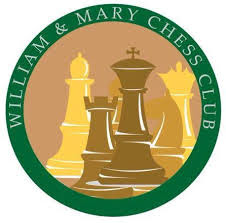Chess: a world of just sixty-four squares and thirty-two pieces, and yet a world of limitless opportunity. It has often been described as precise, tactical and unpredictable — one move can change the course of the entire game. If you have ever played a game of chess, or perhaps watched The Queen’s Gambit on Netflix, you would know how intricately each pawn must move across the deceptively simple checkerboard surface. And as one of the country’s oldest universities, it is only natural for the College of William and Mary to have a club dedicated to one of the world’s oldest games.
Chess Club meets every Wednesday night from 7-9 p.m. in Tucker 310. It is run by co-presidents Owen Edwards ’26 and Sebastian Torrey ’26, who are passionate about the game and the community it fosters.
“I’ve been playing chess for a very long time, so I’ve always tried to involve myself as much as possible,” Edwards said. “I started in middle school, was the club president in my high school, and now I help run it in college, so I’ve been involved in organized chess for a while. It’s something that’s very important to me.”
Together, Edwards and Torrey have made significant changes to the club since they first joined it. At the time, the Chess Club was struggling with membership retention and lacked a formal meeting structure.
“I don’t think we were really following our constitution, and we definitely didn’t have as good club membership retention as I thought we should have,” Torrey said. “I thought this was because before, we were mainly there just to play chess; meetings would start out without any presentation or structure. I took a look at that and said, ‘I need to fix this.’”
The co-presidents then brought their vision to life. Chess Club meetings now begin with a presentation that first provides club members with general announcements, such as information about tournaments and other upcoming events. Then, there is typically a lesson that anyone in the club is welcome to give if they decide they have something they’d like to talk about, such as opening or middlegame strategy. Whenever there isn’t a lesson, a chess puzzle is put up for members to solve together. After that, members often pair up and get right into playing chess.
“We have our own boards, our own pieces, and we will usually just keep playing for as long as we like,” said Torrey.
Torrey began volunteering to give lessons at the beginning of each meeting, noting how a greater knowledge of the game could help members of all skill levels enjoy the experience more.
“I did my best and I had a lot of fun with it. I was teaching people to just have fun with the game through different openings as well as endgames and puzzles,” Torrey said.
Edwards also recognized the potential to expand the scope of the club and highlighted a focus on cultivating the organization to make it welcoming to beginners as well as seasoned players.
“I thought if we could have more activities and be more encouraging to players of all skill levels, if we could make it seem like a more fun and welcoming environment, then we could grow the club to be as big as it could be,” Edwards said.
In addition to regular club meetings, Chess Club also hosts and attends competitive tournaments. Its next one is an intra-club tournament on Oct. 2, which will not put ratings at stake but will pair up club members based on ratings and skill level. Last semester, Torrey and about seven other club members traveled to a quads tournament in Chesterfield, Va., and everyone who attended either placed first or second in their quad.
In addition to these competitive tournaments with more elite players, members of Chess Club as a whole represent a wide range of skill levels. For context, Torrey explained over text message that different chess platforms have different versions of what is called the ELO system for ranking players. Estimates therefore vary, but 100-800 is total beginner, 800-1400 is novice, 1400-1800 is intermediate, 1800-2200 is expert, 2200-2800 is master level and 2800+ is grandmaster level. Chess Club members self-report their rankings, and Edwards explained that most members have a rating of 1500 and below, with a handful of really strong players who are 2000+. One member of the club even has such a high rating in Chess’ online bullet mode, which emphasizes speed and short timers, that they are eligible to compete against grandmasters, the highest title a chess player can achieve not counting the unique title of world champion.
Overall, the club is striving to build an inclusive, lively community open to players of all experiences. In November, the club is excited to host a watch party for the Chess World Championship. Events like these allow members to bond over their shared love of the game. Chess Club member Gyuha Kim ’26 discussed why he chose to get involved.
“I joined Chess Club because I started playing online a lot and wanted to find people to play in person,” Kim wrote in an email to The Flat Hat. “I also wanted to grow my skills by playing against people of different levels.”
According to Torrey, the perception of chess as a largely independent game is much different from the reality of the community that Chess Club seeks to provide members with.
“I think that some might see chess as a solitary or very quiet game, which it definitely is in competitive tournaments,” Torrey said. “But really what Chess Club is about is the social aspect: connecting with people through the game of chess, discussing it as a hobby and making connections and friendships that extend outside of just Chess Club.”

